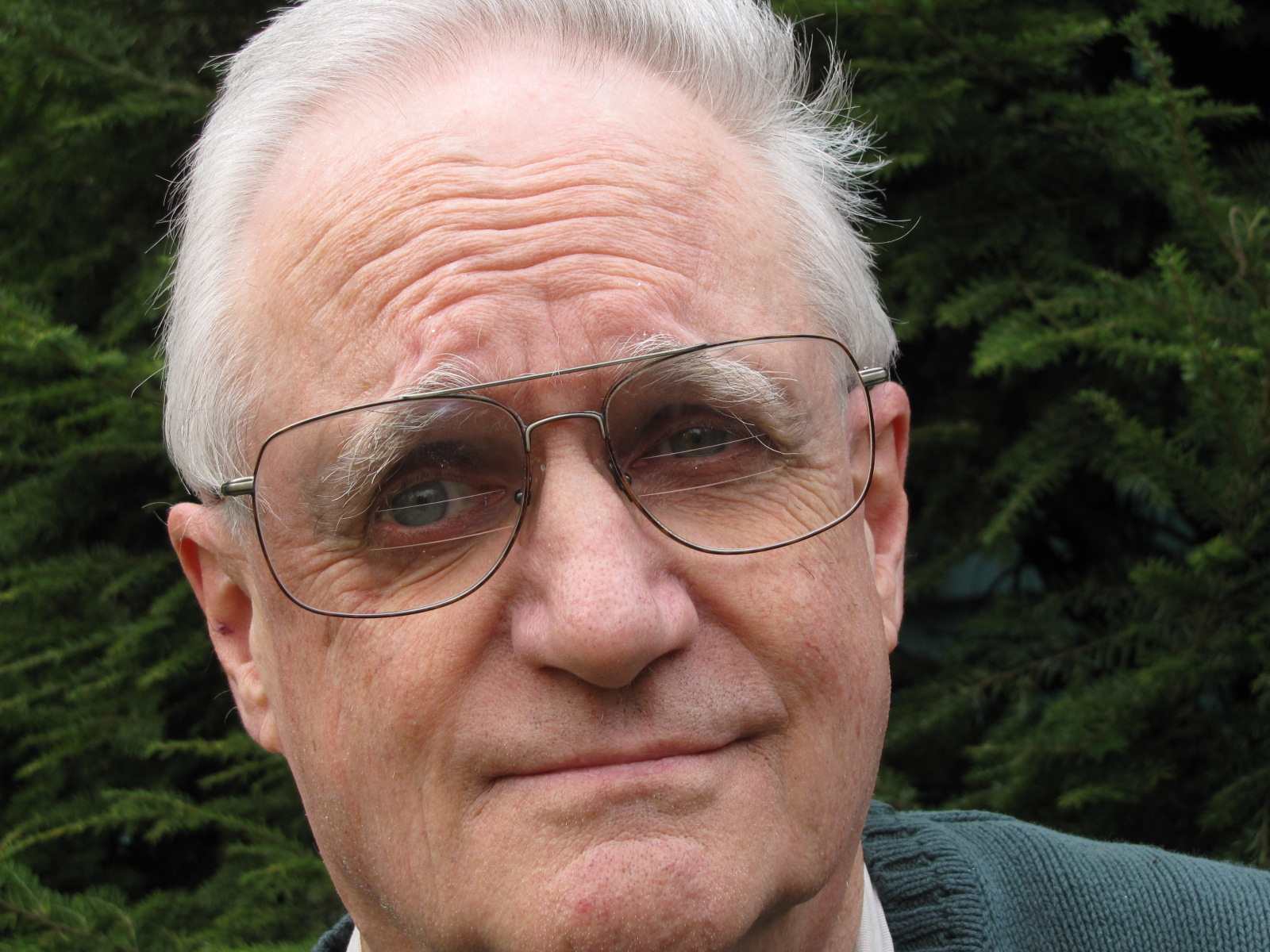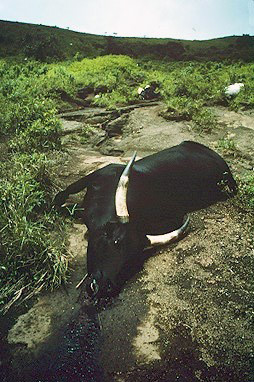Cow killed by a 1986 natural carbon dioxide leak at Lake Nyos. The leakage killed 1,700 people and a large number of livestock. (
source)
A surprise announcement from Canada January 11 has suddenly cast doubt on a favored solution for curbing global warming -- burying carbon dioxide deep in the earth.
Since 1997, the U.S. Department of Energy (DOE) has been promoting experiments to capture carbon dioxide gas (CO2), compress it into a liquid, and bury it a mile below ground. CO2 from burning coal and oil is the
major cause of global warming; the plan to bury it is known as "carbon capture and sequestration" or
CCS for short.
Like DOE, the coal and oil industries favor CCS. The coal industry calls it "clean coal" and desperately wants it to succeed. In the U.S. in recent years more than 100 coal power plants have been
canceled or seriously delayed, often because of CO2 emissions. Without the deployment of CCS on a grand scale, the future of the coal industry looks grim -- and Uncle Sam is playing a key role,
helping Big Coal survive. Energy Secretary Steven Chu
said recently that his agency has, so far, promoted CCS with direct expenditures of $4 billion plus another $8 billion in loan guarantees. Â
The oil industry, too, has a deep interest in CCS. Since the late 1970s, oil companies have pumped CO2 into depleted oil fields to release additional petroleum, a process known as "enhanced oil recovery," or EOR. With EOR, some of the CO2 remains underground, keeping it out of the atmosphere. However, burning the recovered oil releases more CO2 than is sequestered, so CCS for oil recovery stillÂ
exacerbates global warming. Nevertheless, CCS advocates have long pointed to EOR projects as evidence that carbon sequestration has already been proven to succeed.
Now that claim has fallen under a cloud. On January 11, the Winnipeg Free Press
announced that CO2 has been found leaking out of the ground from a CCS oil-recovery demonstration at Weyburn in Saskatchewan.
Since 2000, at
Weyburn the oil industry has been pumping more than 5000 tons of liquid CO2 into the ground each day to demonstrate CCS. The CO2 arrives at Weyburn via a 200-mile-long pipe from the Great Plains Synfuels coal gasification plant in Beulah, North Dakota. From its earliest days, the U.S. Department of Energy has supported the Weyburn demonstration.
The stakes couldn't be higher. CO2 can be captured from smoke stacks, but it could also be captured
directly from the atmosphere, pressurized, and piped to a suitable location for burial deep in the ground. If CCS were deployed on an enormous scale worldwide -- as its proponents hope -- there would be little need for renewable energy like solar, wind or geothermal. As a way to curb global warming, CCS is supported by the coal, oil, natural gas, automobile, railroad and electric power industries because it would allow them all to continue burning fossil fuels, including so-called
unconventional fuels such as Canada's tar sands, oil and gas from shale, liquid fuels from coal, and perhaps even methane hydrates from beneath the ocean floor. Taken together, these energy resources are enormous and enormously dirty. Thus CCS creates a fork in the road for the world's energy future -- will we invest trillions of dollars to stay on the path of high-carbon fossil fuels with CCS, or will we invest in low-carbon renewables like solar, wind and geothermal?
On January 11, a Saskatchewan couple, Cameron and Jane Kerr, released a bombshell
consultant's report indicating that CO2 has been leaking out of the ground beneath their Weyburn farm, ruining their pond and killing small animals like rabbits, ducks, and cats. The Canadian Press told the story in a short
video.
CO2 creates the fizz in soft drinks and beer, but in concentrated form it is odorless, tasteless, invisible, heavier than air, and a potent asphyxiant. If released, concentrated CO2 can form an invisible puddle that
excludes oxygen, suffocating anything in its path.
In his
technical report, geological engineer Paul Lafleur ofÂ
Petro-Find Geochem, wrote, "The... source of the high concentrations of CO2 in the soils of the Kerr property is clearly the anthropogenic CO2 injected into the Weyburn reservoir."  The Kerrs have abandoned their property, fearing for their own safety.
As word of the Kerr's experience at Weyburn gets around, opposition to land-based CCS seems likely to grow. This could increase the pressure to site CCS projects beneath the oceans, where no one lives. In New Jersey, a coalition of 35 environmental, civic and religious groups is aggressively
opposing a plan to bury liquid CO2 1.5 miles beneath the floor of the Atlantic Ocean, 70 miles offshore from Atlantic City.  It's a worthy fight.






